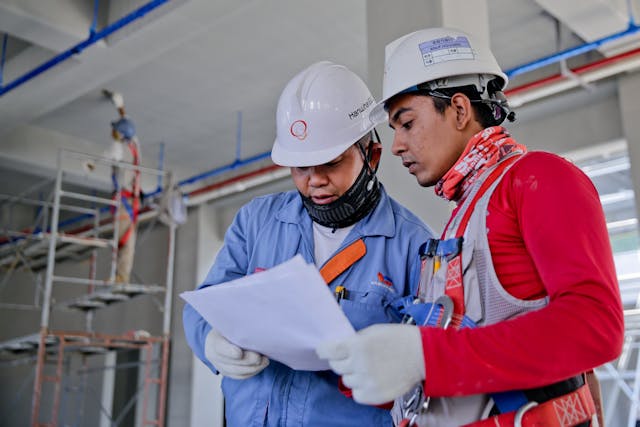The choice of building materials is one of the most important decisions that architects, engineers, and builders must make in the construction industry. These materials serve as the project's structural backbone as well as being essential to its longevity, safety, and visual appeal. The variety of materials accessible has increased significantly due to the quick development of technology and the increased consciousness of environmental impact. The selection of the appropriate material can impact not only the longevity of the construction but also its overall performance and sustainability. Conventional options such as wood and stone can be replaced with contemporary developments like composite materials and recycled pieces.
Environmental Impact
The environmental impact of construction projects is more significant than ever in the modern, environmentally concerned world. The materials you select have a direct impact on the waste generation, carbon emissions, and energy efficiency of a structure. Sustainable building materials, such as bamboo, repurposed wood, and recycled metal, are gaining popularity among builders who want to lessen the environmental effects of their construction projects. Proper materials can also help reduce energy use by increasing insulation and decreasing the requirement for artificial heating and cooling. The need for eco-friendly building techniques and supplies will only grow as society shifts toward more environmentally friendly alternatives.
Safety and Durability
Safety and durability are crucial when creating a structure that will endure for generations. Every material has advantages and disadvantages, and choosing the incorrect one might have grave repercussions. For instance, if not properly handled, wood, although visually beautiful, may be vulnerable to rot and insect damage. Conversely, if the concrete isn't reinforced, it can shatter under pressure despite its extreme durability. Any structure's stability and endurance are greatly influenced by the materials used. Superior materials guarantee that the structure will endure weather, weight loads, and normal wear and tear while preserving its structural integrity.
Cost Efficiency
The cost of building materials is often a significant factor in construction projects. While it might be tempting to cut corners by opting for cheaper materials, this decision can lead to higher costs in the long run due to repairs, replacements, and even structural failures. It’s essential to strike a balance between quality and affordability. For example, quality steel rebar, which is often used to reinforce concrete, may seem like an additional expense upfront, but its strength and durability can prevent costly issues later. Smart material choices made early in the construction process can significantly affect the overall cost-effectiveness of a project. Durability, longevity, and ease of maintenance must all be factored into any cost analysis.
Aesthetics and Design
Beyond practicality, a building's aesthetic appeal is closely related to the materials chosen. In order to realize their vision, architects and designers frequently use materials to create distinctive textures, patterns, and shapes. The warm, natural tones of wood and stone or the sleek, contemporary appearance of glass and steel—materials have an impact on how a building is viewed. They may be chosen to mix in perfectly with the surroundings, or they may express a certain style or tradition. The choice of materials also affects how well a structure ages visually. Certain materials, such as brick or specific metals, acquire a patina over time that enhances their beauty, while others may deteriorate and need regular upkeep.
Technological Advancements
The building sector is always changing as a result of new materials that are more sustainable and functional thanks to technological breakthroughs. Building construction is being revolutionized by innovations such as translucent aluminum that combines the transparency of glass with the strength of metal, or self-healing concrete that can automatically fill in gaps. These state-of-the-art materials frequently perform better in terms of sturdiness, energy economy, and strength. Builders can design structures that are more efficient, long-lasting, and sustainable by utilizing the newest material technology. Making decisions that keep projects at the forefront of innovation requires staying up to date on these breakthroughs.
The choice of building materials is not only a technical one; it is an important one that influences all facets of the construction process, including cost, safety, and environmental impact. A well-selected material can improve a structure's long-term strength, effectiveness, and aesthetic appeal; a poorly selected material might cause issues later on. Builders and architects may ensure their projects endure over time by making well-informed judgments that consider several aspects such as climate, budget, design, and sustainability. Selecting the appropriate materials is a commitment to quality and future-proofing buildings in a world where innovation and environmental responsibility are becoming more and more vital.





Comments